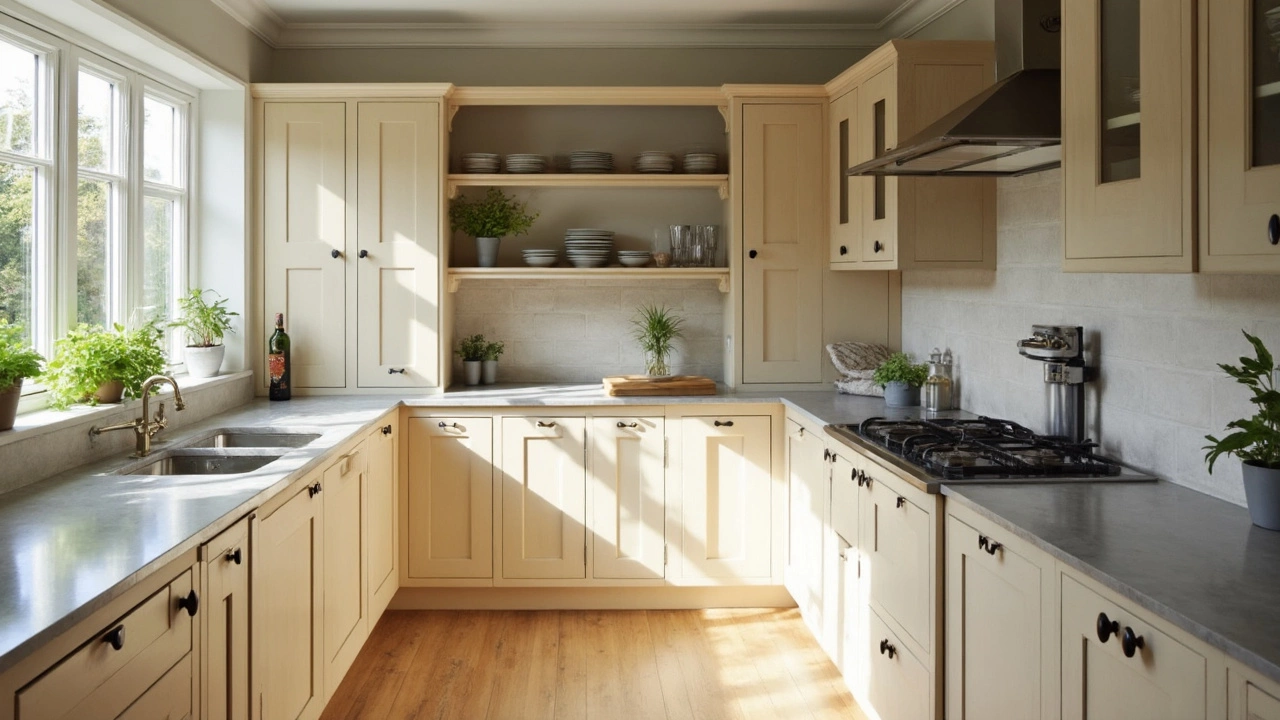Cabinetry Ideas, Styles & Practical Tips
Whether you’re refreshing a kitchen, revamping a bathroom, or adding storage to a hallway, the right cabinets can change a room instantly. Good cabinetry looks good, holds your stuff, and lasts for years. Below are simple steps to pick, plan, and care for cabinets without getting overwhelmed.
Choosing the Right Cabinet Materials
First thing to decide is what the cabinets are made of. Solid wood gives a classic feel and can be refinished, but it’s pricier and can expand with humidity. Plywood offers strength at a lower cost and resists warping better than particle board. If you’re on a tight budget, high‑density fiberboard (MDF) with a laminate finish works well for a smooth look, though it doesn’t handle water as well.
Look at the finish too. Paint gives a clean, modern vibe and is easy to touch up. Stain shows off natural grain and works great in traditional homes. For bathrooms, choose a moisture‑resistant veneer or a sealed paint to avoid swelling.
Smart Layouts for Maximum Space
Cabinet layout drives both style and function. In a kitchen, the classic work triangle—sink, stove, fridge—should stay clear. Place tall cabinets on the sides of the triangle to keep countertops open. Pull‑out drawers instead of deep shelves make it easier to reach plates and pots.
In a bathroom, consider floating vanities if you want a modern look and easier cleaning. Use vertical cabinet space above the toilet or near the shower to store towels and toiletries without crowding the floor.
Don’t forget corner cabinets. Lazy Susans or pull‑out shelves turn an awkward corner into usable space. For closets, install sliding doors if you lack room for a swing door.
When you pick hardware, think about daily use. Soft‑close hinges and drawer slides prevent slamming and extend the life of the cabinet. Handles in brushed nickel or matte black can match most fixtures, and they’re easy to swap if you change the room’s style later.
Budget matters, so set a realistic range. A basic MDF kitchen cabinet can run around £80‑£120 per linear foot, while custom solid wood cabinets might cost £250‑£350 per foot. Adding premium hardware or special finishes will bump the price, so prioritize what matters most to you.
Installation is another key factor. If you’re handy, a modular cabinet system can be assembled yourself with pre‑drilled holes and simple instructions. For larger runs or custom pieces, hiring a professional ensures the cabinets sit level and the doors align correctly.
Maintenance is easy when you know the basics. Wipe wood with a damp cloth and mild soap, then dry immediately. Avoid abrasive cleaners on painted or lacquered surfaces. For laminate, a quick spray and wipe keeps them looking fresh.
Lastly, think about future changes. If you might remodel later, choose cabinets that are easy to re‑finish or re‑paint. Neutral colors like gray, white, or natural wood tones adapt well to new décor trends without costly replacements.
With these tips, you can select cabinetry that fits your style, budget, and everyday needs. Good cabinets work hard, look great, and stay reliable for years—making them a smart investment for any home.
Shaker Kitchen: Simple Style With Lasting Appeal
- Gavin Whitaker
- |
- |
- 0
A shaker kitchen is famous for its straightforward, clean lines and practical appeal. This article breaks down the basics of shaker kitchens, reveals their interesting origin, and shows why they're so popular even today. You'll get tips for spotting real shaker details and making this look work in modern homes. If you're redoing your kitchen or just want a style that won't feel dated, shaker design might be the answer. Find out how to choose materials and finishes that make a shaker kitchen stand out.
View more